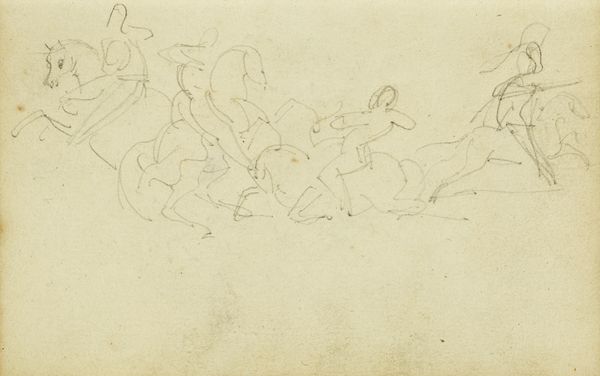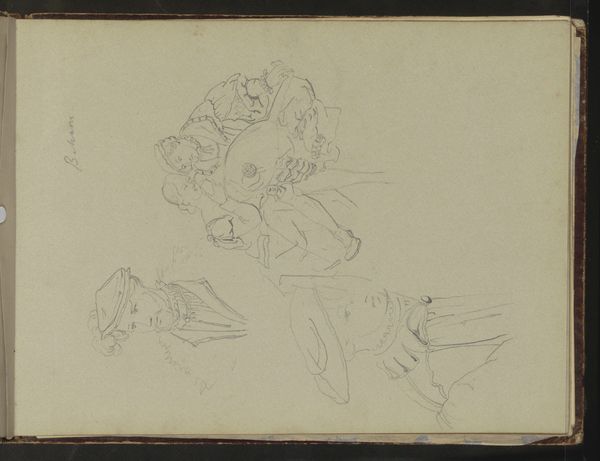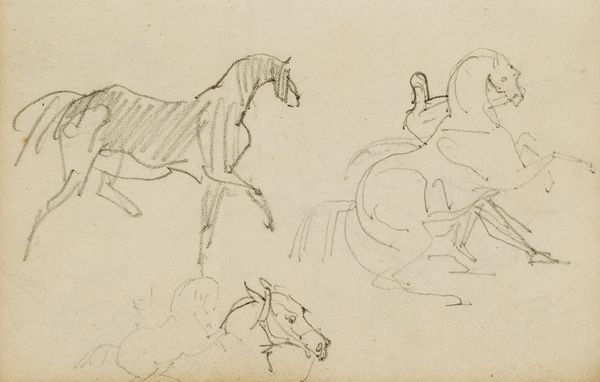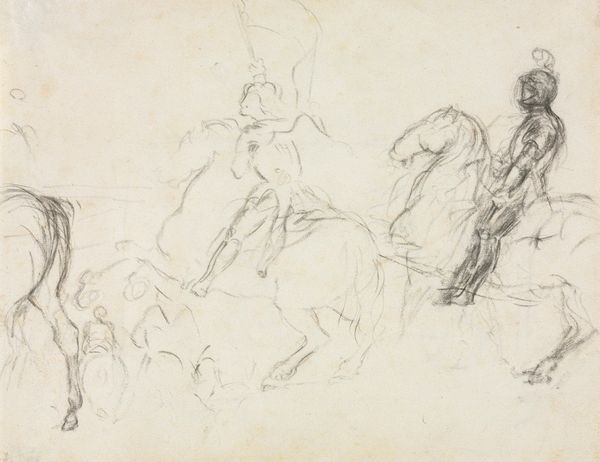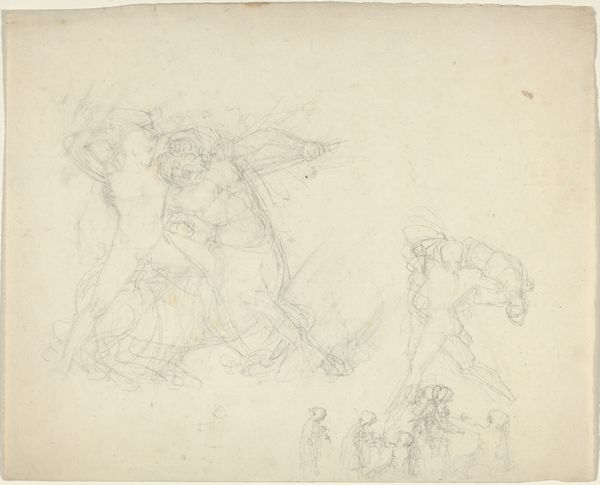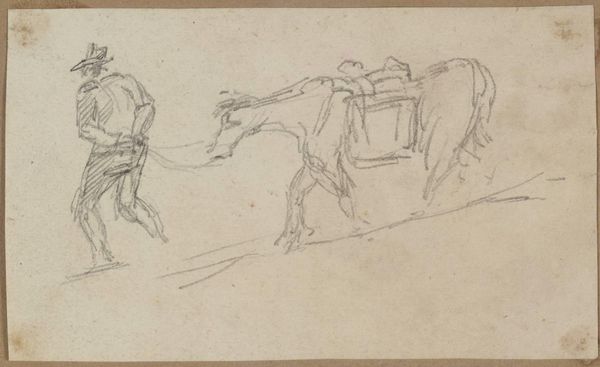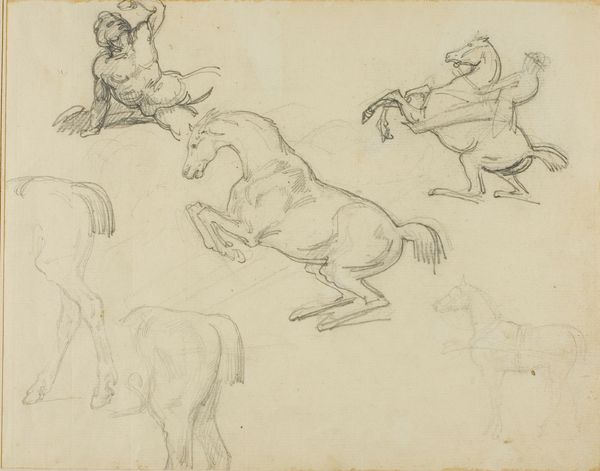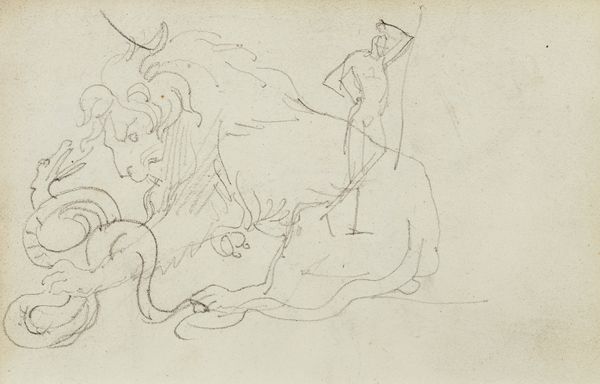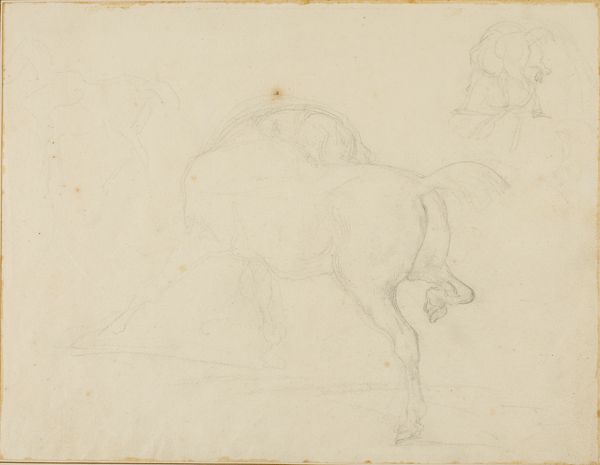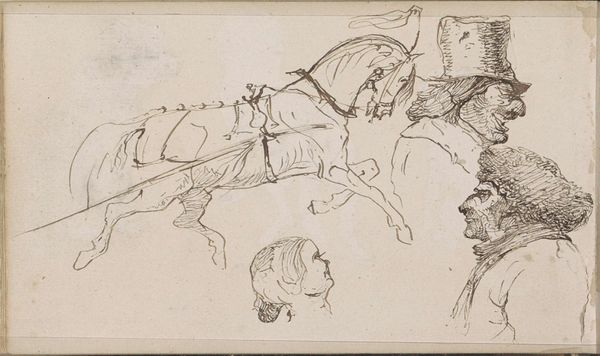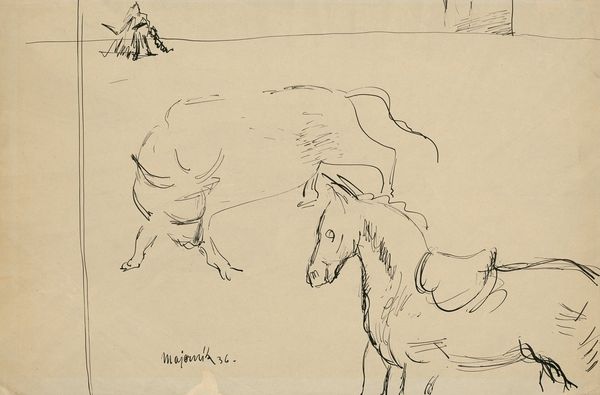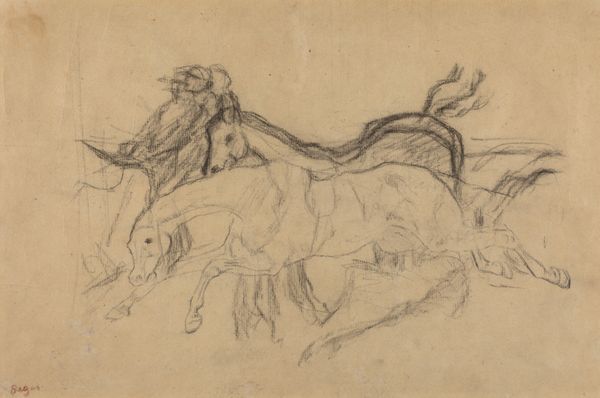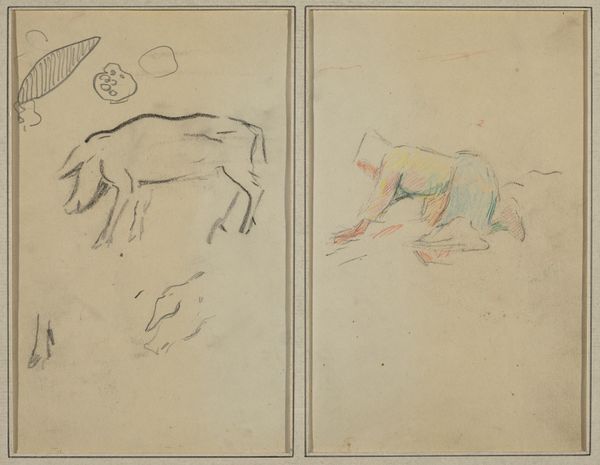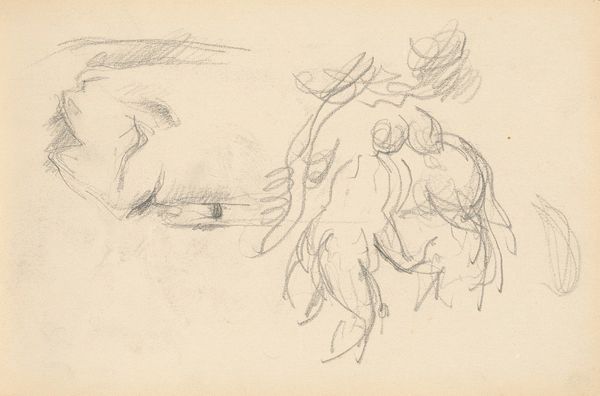
drawing, pencil
#
drawing
#
pencil sketch
#
landscape
#
figuration
#
romanticism
#
pencil
Copyright: Public Domain: Artvee
Curator: Before us is Théodore Géricault’s pencil drawing, "Two Studies of a Rearing Horse," dating from about 1812 to 1814. Editor: It strikes me as very gestural, raw almost. You see the energy of the horses right away, it feels powerful even in its unfinished state. Curator: Indeed. Géricault’s use of pencil here is fascinating. The quick, almost frenetic lines, aren’t just about capturing form. I'd say they are actively participating in conveying movement. We have to remember, he made these studies presumably as prep work to his paintings: "Mounted Trumpeter" for example, or, years later, "The Raft of the Medusa." I'd point out how, as such, the drawings already evidence how Gericault rejected a tradition, promoted by the academies, in favour of a more individual and material conception. Editor: And looking at these sketches in the context of Romanticism, there is something quite compelling about the horse as a symbol. It evokes liberty, passion, even untamed power, especially for someone living in a Europe still undergoing the political shifts resulting from the French Revolution. Do you think there is a relation there with issues of representation for non-white communities? Curator: It certainly intersects, in its symbolism, with historical depictions of animals of burden as racial epithets, so one can be sensitive to the way this association also informs our reading of equestrian art. I would even suggest that there’s an interesting commentary at play here, even if unintentionally: these drawings were instrumental in exploring equine anatomy. By foregrounding material understanding as much as an idealized view, this study underscores the way Géricault’s art participates in a tension of its era. Editor: That material element feels especially potent to me. Think of the physical act of sketching: Géricault must have felt that energy, the muscles moving, almost in his own hand as he drew. Curator: Precisely. A drawing like this offers so much beyond mere representation of equine posture and can bring forth the physical tension in art. Editor: Ultimately, what lingers is the sheer vitality captured through such simple means. It's almost like we feel a glimmer of the artist’s hand directly, isn't it? Curator: A perfect blend of intention and technique shaping a new kind of emotive representation— Géricault, ever the Romantic.
Comments
No comments
Be the first to comment and join the conversation on the ultimate creative platform.
